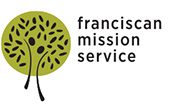Getting To Know the “Real” St. Francis of Assisi
 |
|
| St. Francis of Assisi by Cimabue |
Did you know that statues of St. Francis are the second most popular lawn ornament sold every year – right behind pink flamingo? That is an image many people have of St. Francis, certainly one reinforced by Franco Zeffirelli’s film “Brother Sun, Sister Moon,” another in a long line of romantic interpretations of the poor man from Assisi.
The “real” St. Francis of Assisi is masked by the popularity of misleading images and miss-assigned quotations. Francis seems to be reinvented and marketed as needed, and on this his feast day, you’re sure to encounter a few of these reinventions.
In the 20th century, Francis was portrayed as “a free spirit, a wild religious genius, a kind of medieval hippie, misunderstood, and then exploited by the ‘medieval Church.’ Or perhaps they know him as the man who spoke to animals, a nature mystic, an ecologist, a pacifist, a feminist, a ‘voice for our time.’ For others he is the little plaster man in the birdbath, the most charming and nonthreatening of Catholic saints…. almost everyone has his or her own Francis” (Francis of Assisi, Augustine Thompson OP).
One of the popular bits of wisdom attributed to Francis is, “Preach the Gospel at all times, use words if necessary.” Sorry – he didn’t say it – even if it sounds very Francis-like. Another quote making the rounds is, “Start by doing what’s necessary; then do what’s possible; and suddenly you are doing the impossible.” This one does not even sound like Francis (at least to me) – and it too is mis-assigned to the saint from Assisi.
And, I’m sorry to tell you, the “Peace Prayer of St Francis” – the one that begins, “make me an instrument of your peace” – is not from St. Francis. It certainly captures one aspect of the Franciscan tradition, but it dates to 1912 and was first published as a poem in the French spiritual magazine, La Clochette. Later during World War I it appeared on the back of a holy card bearing an image of St. Francis and the association of the two became cemented in our minds.
Francis has become the source material for well-meaning folks. People as diverse as John Michael Talbot and Sr. Joan Chittister have enlisted Francis for their own ideological projects. Even the Franciscan friar, Fr. Richard Rohr once proposed Francis as a “feminist-pacifist with no apparent sacramental life” (Thompson) – an odd thing because in Francis’ own writings Eucharist is one of the topics he most writes about.
And comparatively speaking, we have lots of Francis’ own writings. Most are letters to the Franciscan order, but some are personal testaments. And then there are lots of other sources: authorized and other biographies, collections of stories, legends, and later official compositions about Francis, written or compiled within 25 to 35 years of Francis’ death.
And then there are the “sources” about Francis that come from later periods – and these seem to be the ones that contemporary people use for their projects. The problem is that these later sources are far more concerned with Francis as “their” saint than the person who grew up in Assisi, struggled with his direction in life, was uncertain about what God was asking of him – in other words, all the same issues we face in life.
Typical of the later sources is the Fioretti (The Little Flowers) a collection of stories – many miraculous and all very saintly – that first appeared in 1390 in Tuscany. One of the popular stories from the Fioretti is about the wolf of Gubbio who terrorized the city of Gubbio until it was tamed by St. Francis of Assisi acting on behalf of God. Is it a true story? The people of Gubbio would say it is true.
But my point is this: to settle for the pop-culture or Fioretti images of St. Francis is to miss the “real” Francis whose story will challenge, inspire, unsettle, amaze, and maybe – just maybe – change your world as you begin to understand what moved Francesco of Assisi to follow Jesus and give his all to God. Deus meus et omnia. “My God and my all.”
On this Feast of St. Francis, may you be encouraged to come to know the “real” St. Francis of Assisi.
Tagged in:
